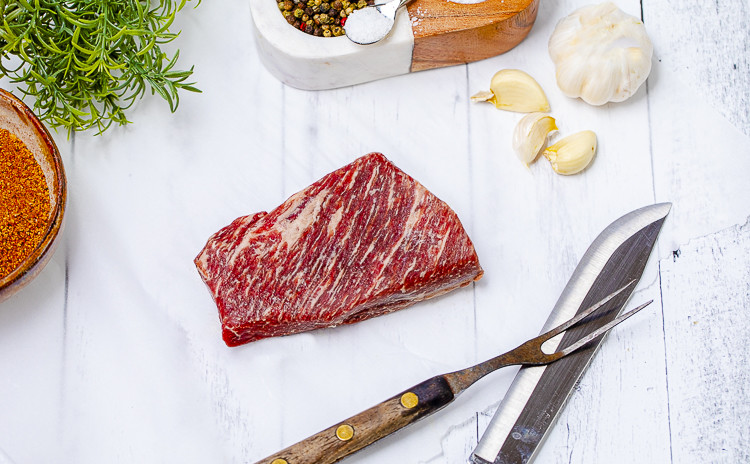How to Make Smoked Wagyu Jerky
posted on
April 26, 2019
What you'll need:
- 2 lb minimum of Wagyu round steak or rump roast
- Meat slicer
- Curing kit (Buy at Runnings, Walmart or online)
- Air-tight container for storage
- 2 Racks for smoking
- Access to a smoker!
- 24 hr minimum for meat to cure
Getting Started:
You'll want to get started on your project 2 days before you plan on smoking. For example, we do our smoking on Saturday mornings, so we prep all the jerky on Thursday night.

Once meat is thawed out, set up your meat slicer (can be done by hand, but is better with an automated slicer for consistency in thickness). You'll want to set the thickness to about 1/2 in, or as desired. Whatever you set it to, it's important to keep it consistent for ease of cooking. Trim your cuts of meat of any excess fat as the fat becomes chewy in the end product if not trimmed.

Once meat is sliced, you'll place it in your air tight container. Apply the curing and seasoning mixture to each layer you place in the container. Sprinkle curing mix onto one side, flip the pieces over and apply to other side as well. Be sure to follow the directions on the curing packet and use the proper amount of seasoning and curing for corresponding amount of meat.

Continue this process until you've processed all the meat. Close your airtight container and leave in the fridge for at least 24 hours to let cure.
After your jerky has marinated and cured for at least 24 hours, you can fire up your smoker! Recommended pellets to use for a pellet smoker are the Hickory, Mesquite, or Pecan pellets- depending on the seasoning you choose.

Turn your smoker up to 200℉. Lay meat strips out on grill so that they do not overlap. Smoke over low heat. Jerky will be done when the edges appear dry with just a slight hint of moisture in the center of the slices, about 6 to 8 hours.
VERY IMPORTANT:
Once your jerky is done smoking, return to airtight container and leave in the refrigerator for another 24 hrs before eating. This allows the flavors to settle and integrate for the best results. Enjoy!




